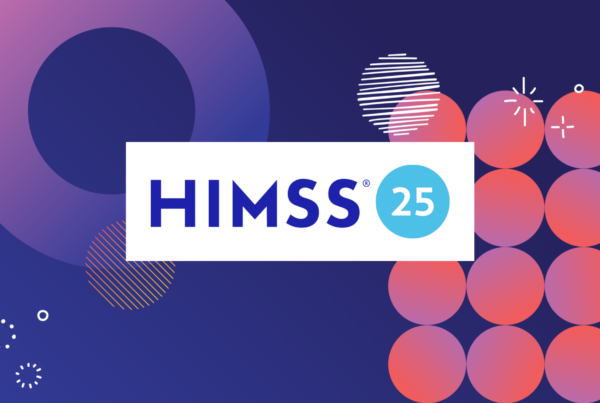Healthcare, where are we?
While seemingly deceptive, that innocuous little question actually has a lot of answers. Some are challenging—and some are so simple we actually miss them, distracted by that shiny object we call innovation.
Last week, it seemed that all of healthcare was at the ViVE conference in Nashville. Which convened just as 911 calls were pouring in from the Covenant School, just under 10 miles up the road from where the conference was being held. As awareness spread like wildfire, attendees were refreshing their phones for updates, and many were urgently reaching out to check on close connections or loved ones. The shooting set a somber tone that never quite lifted. Needless to say, there is no conversation about ViVE without a reflection on this tragic event.
As America begins to tally more mass shootings in 2023 than days elapsed this year, we begin to notice a parallel in healthcare, as it relates to the worst of history repeating itself, over and over again. This tends to happen in our industry over time, whether the redux is mental health, the opioid crisis, or the financial lessons we can’t seem to learn when it comes to easy money, risky investments, and delusional valuations.
For all these examples, it’s imperative to circle back to our original question: healthcare, where are we? And how, once and for all, do we make sure that we land some place better than where we’ve been before?
Where are we: The intersection of addiction and geography
The opioid crisis is one of the truly terrible places healthcare has been, and where it stayed for far too long. The misguided philosophy of ‘profits over people’ helped oxycontin addicts and kill millions of people — including those who had been living very traditional lives.
For many, it was only a matter of weeks from the first pain pill that everything changed, forever altering their destinies, and those of their loved ones. The opioid crisis illustrates the awesome power of medicine — to heal, yes, but also to harm. It’s up to everyone involved to ensure that the power rests on the right side of the balance.
Balance of access to high-quality care is a related area of struggle. Maternity deserts, medicine deserts, and food deserts are growing. It doesn’t take long to travel outside America’s urban centers and into its rural heartlands, where quality care and a qualified workforce to deliver it is in even shorter supply than the rest of the U.S.
Where are we: Making pandemic changes permanent
Rural communities were the original home of telehealth innovations, the ones that are starting to slip through our fingertips like water droplets as pandemic imperatives begin to fade. We were given a lot of thrilling new technology from our global health crisis, but the mindset changes that felt oh-so-permanent in 2020 and 2021 are already beginning to retreat.
This impermanence makes me feel repetitive. I’ve said it before and I’ll say it again: healthcare needs fewer futurists. Instead, we need more past-ists and present-ists, the kind of people who are able to focus on solving the persistent challenges that have plagued the industry for decades: data interoperability, health equity, and access, the provider-physician relationship, and more.
These individuals focusing on real problems bring me hope. For instance, those working to address healthcare’s access challenges that are worsened by the dysfunctional prior authorization process. Here, I’ve got to shout out Dr. Steve Kim, a pediatric neurosurgeon who spent the last 10 years dedicating his nights and weekends to launching and scaling Voluware, a company committed to streamlining workflows, and finally getting PAs right.
Where are we: Healthcare investment’s moment of reckoning
Speaking of greed, check me on this, but are we back to the mortgage-backed securities and credit-default-swap mentality that created the 2008 financial meltdown — the one that came with more red flags than a referee on steroids? Heck, maybe we’re even back to 1987, the year that Gordon Gecko declared in Oliver Stone’s Wall Street that: “Greed is good. Greed is right. Greed works.”
Until it doesn’t.
And in the long term, greed plus a lack of discipline can’t continue to work in healthcare.
This does not only apply to the coronavirus pandemic and opioid crisis, but to healthcare investment strategy as a whole. We are on a rollercoaster. Just last year, everyone froze up and we saw a slowdown, then suddenly we followed quickly rising interest rates, watched SVB meltdown and experienced the resulting panic that fell like a shadow across healthcare investment as a whole.
You’ve got to wonder… How responsible are we as an industry? Is irresponsible investment fueling an oversized ecosystem that is collapsing on the weight of its own exuberance? Just a couple of light existential questions that keep a CEO up at night, heart racing after some thought-provoking conference speak. But seriously, we have a moral reckoning to face on this fast and easy money train we’re riding.
Where are we: Healthcare leadership
Healthcare’s “Raise a ton of money! Do all the things!” mentality also extended into hiring. But, the shifting winds signal that the layoffs hitting Big Tech are coming for healthcare and a C-suite near you, next.
To quote our partner Christel Alvarez from Alvarez Search who was surveying the scene last week at ViVE: “The CFO and CRO searches are hot, but I believe we can expect high CEO turnover this year.” Likely a prediction that will apply to other healthcare execs, as well. Time to brace for some change, and watch to see how organizations’ strategic roadmaps are adjusted accordingly.
Where are we: The healthcare conference scene
So how are healthcare conferences shaking out now that we’ve finally reached the official end of the three-year-long COVID public health emergency we’ve been living in?
As it turns out everybody’s still trying to figure things out. We’re all trying to navigate which conferences to attend and which ones to skip, which conferences have moved to the cool kids table and which ones are staring at sack lunches filled with soggy PB&J.
But does the question of “to go or not go” have to be binary? I don’t really think so. The main thing is not where you go, but who your dates are. As we all know, conferences can be one the few places where a high density of your prospects are in one place. If you’re not setting meetings before, during, and after, why are you even there in the first place?
Where are we: Headed next
As you can see, these conferences do leave us with lots to think about. From healthcare’s imperatives of today to the conferences of tomorrow, we are in an industry that is always moving, always changing, and always working to improve.
If I had to rewrite Gordon Gecko’s speech for 2023, it might go something like this:
“Adapting is good. Adapting is right. Adapting works.”
Especially when you adapt before it’s necessary and you focus on the right things instead of just the shiny ones.
With that said, see you at HIMSS.






